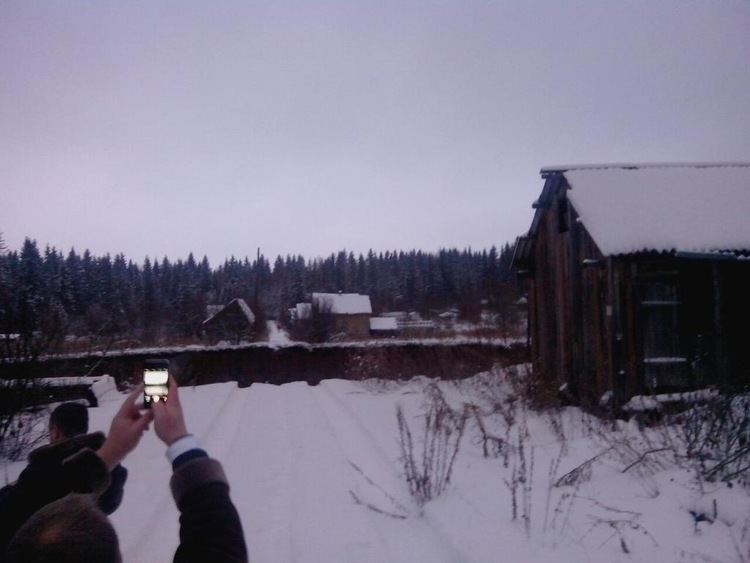Area 166.6 km² Founded 1430 | Population 95,703 (2009) | |
 | ||
Map of Solikamsk
Solikamsk (Russian: Солика́мск) is a town in Perm Krai, Russia. Before Peter the Great's reign, it was the largest industrial centre of the Tsardom of Russia and contains a fine collection of churches from that period. Modern Solikamsk is the third-largest town in the krai, with a population of 97,384 (2010 Census); 102,531 (2002 Census); 110,098 (1989 Census).
Contents
- Map of Solikamsk
- History
- Coat of arms
- Cultural heritage
- Education
- Administrative and municipal status
- Salt production
- References
History
The earliest surviving recorded mention of Solikamsk, initially as "Usolye-na-Kamskom" (Усолье на Камском) dates from 1430, in connection with the discovery and exploitation by miners and merchants, probably from Vologda, of massive salt deposits on the banks of the Usolka River. The name of the town is derived from the Russian words "соль" (sol, meaning "salt") and "Кама" (Kama River, flowing through the town).
The rapid growth of Solikamsk in the 17th century was predicated on the establishment of the Babinov Road, which was the only overland route leading from European Russia to Siberia. This road started in Solikamsk. The Stroganov family operated the country's largest salt-mining facilities in Solikamsk and the surrounding area. The local saltworks were described in detail by Johann Georg Gmelin. In the mid-17th century Solikamsk also became the first centre of copper casting in Russia.
After the establishment of iron works in Yekaterinburg and Perm and the construction of a southern highway to Siberia the importance and prosperity of Solikamsk gradually declined. Until 1923, the town was the administrative center of Solikamsky Uyezd in Perm Governorate. In November 2014 a sinkhole opened near Solikamsk because of a mining problem.
Coat of arms
Coat of arms was granted to Solikamsk on July 17, 1783. The arms show in the upper half the arms of Perm Governorate. The lower half shows a salt well, due to Solikamsk being the largest producer of salt and magnesium in Russia at the time.
Cultural heritage
Cultural heritage monuments in Solikamsk include a slew of old churches and several civic buildings of importance, including:
The most important religious buildings are the following:
Other local sights include an old salt pit (in use since 1906) and the Salt Museum which occupies the buildings of the Ust-Borovaya Saltworks established in 1878.
The oldest brick building in the Urals, the Church of the Cross's Exultation (1678), is located in the former village of Verkh-Borovaya, 20 kilometers (12 mi) north of Solikamsk.
Education
Solikamsk is a home Solikamsky State Teachers' Training Institute (branch of Perm State University).
Administrative and municipal status
Within the framework of administrative divisions, Solikamsk serves as the administrative center of Solikamsky District, even though it is not a part of it. As an administrative division, it is incorporated separately as the town of krai significance of Solikamsk—an administrative unit with the status equal to that of the districts. As a municipal division, the town of krai significance of Solikamsk is incorporated as Solikamsk Urban Okrug.
Salt production
The town is famous for its production of salt; in particular, potassium chloride, which is used as a fertilizer. More than 11,000 people work in salt mining, 3,000 underground, and 7,000 above ground. It is also close to a labor camp during the Soviet times, which is now used as a museum. There is also a museum dedicated to explaining all stages of salt mining and refining.
